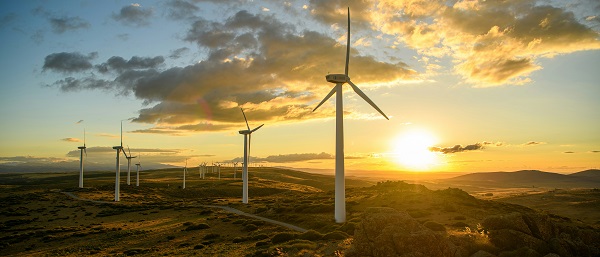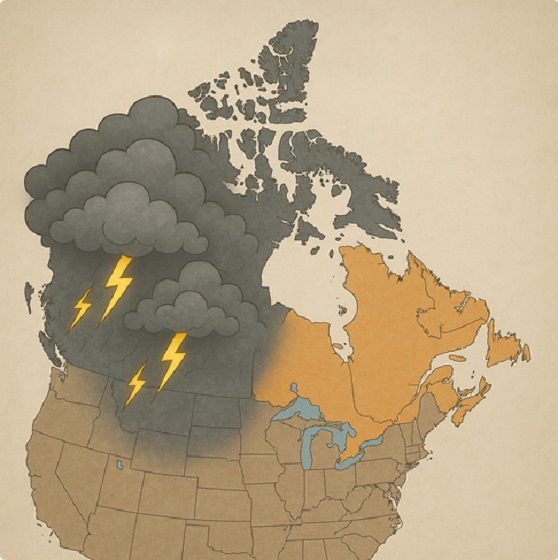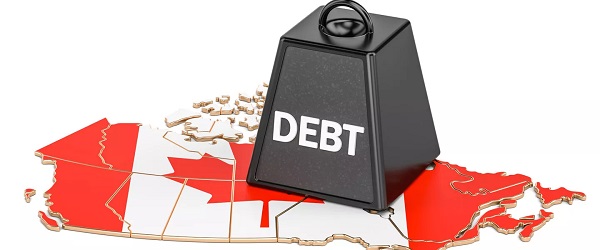Alberta
Alberta’s New School Library Guidelines Make Sense

From the Frontier Centre for Public Policy
New rules on sexually explicit books in libraries ensure that students only have access to age-appropriate materials
Should books with sexually explicit content be in school libraries?
If your answer to this question is “no,” then you agree with the Government of Alberta’s recent ministerial order on school libraries. If your answer is “yes,” then you agree with the critics who oppose this order. It is that simple.
Judging by the reaction of the government’s critics, one might think the Alberta government had just enacted a sweeping book ban. However, the guidelines announced by Education Minister Demetrios Nicolaides are clearly targeted at sexually explicit content. Unless you believe young children should have access to sexually explicit content at school, it makes little sense to oppose these new guidelines.
Lest one assume no school would allow sexually explicit content in its library, the Alberta government posted excerpts from four American books found in many Alberta school libraries. There is no question that the content in these books is sexually explicit, something any reasonable person can confirm.
The Alberta Teachers’ Association (ATA), which seems to oppose every announcement this government makes, issued a statement claiming these guidelines would “result in the removal of valuable and inclusive resources from our libraries.” However, it’s unlikely many parents think there’s anything valuable or inclusive about providing children with sexually explicit content.
In its news release, the ATA also argued these guidelines would “have a chilling effect on our schools and signal to students who are coming to understand themselves that some expressions of their gender and sexual identities are shameful and should be hidden away.”
However, these guidelines do not single out or target any gender identity or sexual orientation. Instead, the focus is entirely on books that contain sexually explicit content. Students will still be able to access books that portray a variety of gender identities and sexual orientations from their school libraries. Additionally, these guidelines do not apply to books that address topics such as puberty and menstruation.
Critics argue that these guidelines impose an unreasonable burden on school boards and distract them from more important issues. However, there is nothing unreasonable about requiring school boards to make clear what criteria they use when selecting books for their school libraries. Frankly, this should have already happened years ago.
Regarding the argument that these guidelines distract from more pressing issues in education, nothing in this announcement detracts from other current initiatives in Alberta schools. In fact, the announcement was made in July, one of the slowest times for the education system. If the government really wanted to distract from other issues, one might have expected this announcement to happen in September or October, when the school year is just beginning.
In addition, some school boards have been vocal in their support for these new guidelines. For example, Nicole Buchanan, chair of the board for Red Deer Public Schools, spoke in favour of the library guidelines at a provincial news conference. As part of her remarks, she said, “This isn’t about banning books or silencing voices. It’s about recognizing that some content simply isn’t appropriate in a K-12 setting.”
Buchanan is absolutely right. Just because some things are widely available to students outside of school doesn’t mean they must be accessible within school. For example, as a teacher, I understand many students watch television shows and YouTube videos that contain plenty of profanity. However, that doesn’t mean it’s appropriate for me to use the same words or show the same videos in class.
As a society, we recognize that schools have a responsibility to protect students and ensure they are exposed to positive influences. While we cannot control what students do outside of school, there is certainly an expectation that any content we provide to students in school is age-appropriate. This is true whether we are in the classroom or in the school library.
The Alberta government did the right thing when it introduced guidelines for school libraries. There is nothing unreasonable about ensuring students, particularly those in elementary school, are not exposed to sexually explicit content in school.
Parents and students deserve no less. The Alberta government has made the right decision.
Michael Zwaagstra is a public high school teacher and a senior fellow with the Frontier Centre for Public Policy
Alberta
Alberta union scales up training for pipe-layers, tower crane operators

The Budd Coutts Apprenticeship and Education Centre near Edmonton, run by the International Union of Operating Engineers (IUOE) Local 955, has increased training for operators of crucial pieces of heavy equipment called pipe-layers or “side-booms.” Photo supplied to the Canadian Energy Centre
From the Canadian Energy Centre
By Will Gibson
‘We are increasing our programs because we see huge shortfalls in the future’
Having learned to drive a tractor before he was old enough to shave, Allan Dakin started operating heavy equipment for a construction company around the same time he obtained his driver’s license.
“I got into construction when I was 16,” says Dakin, who was born in Lac La Biche, Alta. but moved to Fort McMurray in the 1970s when his father got a job at the Great Canadian Oil Sands project, which is now Suncor Energy’s Base Plant.
“Because I was a farm boy, I was comfortable around those machines. But I still had a good mentor who taught me a lot.”

Pipe-layers or “side-booms” at IUOE Local 955’s Budd Coutts Apprenticeship and Education Centre near Edmonton. Photo for the Canadian Energy Centre
Dakin is now guiding the next generation of operators as an instructor at the Budd Coutts Apprenticeship and Education Centre run by the International Union of Operating Engineers (IUOE) Local 955.
Last spring it became the first union to receive Alberta government funding for skills training, with $350,000 announced to support a mobile crane operator apprenticeship program. That was expanded in the 2025 provincial budget with $15 million granted to union training providers over the next three years.
Now the centre, located about 45 minutes northeast of Edmonton, has expanded its training program for operators of crucial pieces of heavy equipment called pipe-layers thanks to funding from the Pathways Alliance.
The industry group represents six of Canada’s largest oil sands producers.
Pipe-layers, also known as side-booms, are bulldozers with a crane attached to the top used to pick up, carry and place lengths of pipeline.
“Pipe-layers or side-booms are what we use to build pipelines. That’s not just oil and gas pipelines. They are used for water and sewer lines as well,” says Chris Flett, business manager for Local 955.
“They bring the fibre optic cables to your homes. They are an important piece of equipment to build communities and industries. If you want to build the country and your communities, all these pieces of equipment we are operating out here are necessary and important.”
Local 955 is continually looking for new partners to grow its training capacity, Flett said.
“We are increasing our programs and adding to our offerings because we see huge shortfalls in the future,” he said.
“If we don’t do it, we are going to have a really hard time getting projects off the ground in this country.”
Pathways Alliance president Kendall Dilling said its sponsorship will help industry find the skilled workers it needs for the coming decades.
“Local 955 has an excellent track record of supporting our industry, retaining a high percentage of apprentices in their program, fostering strong relationships with Indigenous workers and communities as well as providing skilled labour on major projects,” Dilling said.
The course to train pipe-layer operators takes three weeks and costs $3,000.
The Canadian Energy Centre spoke to Cole Miller, who has worked on pipelines for the past 11 years, one week into the pipe-layer operator course.
“I’ve worked around side-booms while I’ve worked on pipelines but this my first time on this piece of equipment so I’ve been getting used to the machine and the controls,” said Miller, who lives in Westlock County, a rural area north of Edmonton.
“We have really good instructors, they have been awesome. It was a little intimidating at first but you get lots of one-on-one time with them.”
The centre has also expanded its course offering to include training on a tower crane erected at the centre’s 160-acre work site, supported by both the provincial and federal governments.

Tower crane at IUOE Local 955’s Budd Coutts Apprenticeship and Education Centre near Edmonton. Photo for the Canadian Energy Centre
“This is the first tower crane in the Prairies solely dedicated to training and instructing operators,” Flett said.
“Tower crane operators, in particular, are one of the most in-demand trades and one of the most technical. If you want to build the cities of tomorrow, the skyline is built with tower cranes.”
Dakin, who also worked in the oil sands in his 40-plus years of operating equipment, sees a bright future for Miller and other operators.
“Working with the students is very fulfilling because you see their excitement and willingness to learn. I really enjoy giving back what I’ve picked up over the years,” said Dakin, who has instructed students at the centre on everything from excavators to graders to haul trucks to pipe-layers.
“It’s so important to make yourself more diverse by training on different equipment because more doors open when you have more skills and knowledge.”
Alberta
Vast geological riches underpin Canada’s immense energy potential

Stacks of geological core samples are stored up to 8.5 metres high on specially designed racks at the Alberta Energy Regulator’s Core Research Centre in Calgary.
From the Canadian Energy Centre
By Brad Hayes
How geology can make Canada an energy superpower
We hear about Canada’s aspirations to become an “energy superpower” a lot these days. Easy to say, but what does it really mean? And if Canada can indeed become an energy superpower, how can we achieve that status?
Energy is at the core of everything humanity does. Growing our food, building and running our homes and businesses, making the goods and services we consume, and moving those goods – and ourselves – from place to place.
Energy security is one of the most important human needs because we can’t live our lives without energy.
But many global citizens don’t have energy security today. Hundreds of millions of people around the world have little or no access to electricity, and billions more don’t have enough electricity to live a basic modern lifestyle.
Many nations, even rich nations like Japan and Germany, can’t produce enough energy to meet the needs of their own citizens and industries, and have to rely on energy imports of coal, oil, gas, uranium and electricity from their neighbours and trading partners.
Only a few countries – like Canada, the United States, Australia and Saudi Arabia – are energy powers. They have substantial populations with modern, high-energy economies and they produce so much energy that they can export to others.
But Canada stands out with the potential to be an energy superpower because our energy resources are enormous and diverse, supported by incredible geological riches across the entire country.
The Global Energy Mix
More than 80 per cent of the energy humanity consumes comes from fossil fuels (oil, natural gas and coal). Long-term trends demonstrate that we will depend on fossil fuels for decades to come.
Figure 1 shows global primary energy consumption by source for all our needs: electricity, industry, transportation and heat.
The key to this graph is that we live in a time of energy addition – we’re using more energy from every source, all the time. Nothing is being displaced because there are more people on Earth every year, and each one of us wants a modern, energy-rich lifestyle.
Canada’s unique blessing as a budding energy superpower is that we are or have the potential to be a big player in all major categories of energy production, including oil and gas, nuclear power, hydroelectricity, renewables, lithium, hydrogen and coal.
Our strength lies in our huge and diverse geological resources.
Oil and Gas
Leading Canada’s enormous resource base is oil and gas. Geologists have discovered oil and gas in sedimentary basins across western, northern, central and eastern Canada (Fig. 2).
Regarding oil, people think immediately about Alberta’s oil sands, which give Canada the fourth-largest global oil reserves. These reserves are being systematically and efficiently produced at rates that will support domestic consumption and exports for decades to come.
We also have substantial oil reserves and production from traditional reservoirs in Western Canada and offshore Eastern Canada, where the Hibernia oilfield is a global supergiant.
But there’s more. These reserves represent only oil that has been discovered and proven economically viable to develop using existing technology.
Our resource base – oil deposits we have identified but haven’t yet built the infrastructure or technology to access – is huge, diverse and world-leading.
Canada’s untapped oil resources include untested oil sands plays, oil hosted in shales, undeveloped conventional oil discoveries in the Far North and huge oil resources off our eastern coast that are only now being explored.
Canada not only supplies all its own oil needs, but it is also the fourth-leading oil exporter in the world today by volume. It has the resources to maintain and improve that position in the long term.
The story is similar for natural gas.
Our traditional gas reserves were developed decades ago to fill our own needs and for export to the United States. Horizontal drilling and hydraulic fracturing technologies have increased our gas reserves base immensely over the past 20 years as we develop world-class shale gas plays like the Montney Formation in west-central Alberta and northeastern British Columbia.
And like our oil resources, Canada’s gas resources have grown over time – with shale gas plays holding literally centuries of producing potential in Alberta, B.C., and the Northwest Territories.
Other plays in Quebec, Ontario and the Maritimes have been mapped and await validation by drilling more wells. And let’s not forget massive but remote conventional gas discoveries and resource potential in the Northwest Territories, offshore Newfoundland and Labrador, and offshore Nova Scotia.
Nuclear Power – Uranium
Electricity generation from nuclear fission has been an important component of global energy supply since the 1970s, and is rising again today (Fig. 1). Growth is accelerating as more people in more countries appreciate nuclear’s reliability and low emissions profile.
Canada is a nuclear leader with its CANDU nuclear generation technology, but also because of its rich uranium resources.
Uranium is found in igneous and metamorphic rocks of the Canadian Shield, the geological heart of Central and Eastern Canada (orange area in Fig. 2). We have active mines in northern Saskatchewan and a rich inventory of uranium exploration prospects and resources in Ontario, Manitoba, Saskatchewan and the Northwest Territories (Fig. 3).
Canada is the world’s second-leading producer and exporter of uranium, supplying our own nuclear reactors and many others across the globe – and has the resource base to improve that position as nuclear demand grows.
The World Nuclear Association has some great information about Canada’s uranium resources at https://world-nuclear.org/information-library/country-profiles/countries-a-f/canada-uranium, and the Canadian Nuclear Safety Commission has more on Canadian uranium mines and mills at https://www.cnsc-ccsn.gc.ca/eng/uranium/mines-and-mills/.
Hydroelectricity
Canada is also a leader in another energy source high on the global supply chart: hydroelectricity. We produce more than 60 per cent of our electricity from hydro, particularly in British Columbia, Manitoba, Ontario and Quebec.
Although somewhat indirectly, Canada’s geology is responsible for our rich hydro output and potential because geological processes formed the mountains of Western Canada and the extensive uplands of Eastern Canada that provide the topographic relief that gives energy to water rushing downhill to hydroelectric dams.
Carbon Capture and Storage – and Lithium
Not only do sedimentary rocks in Canada’s sedimentary basins host our fossil fuel resources, they contain immense volumes of highly saline water, much left over from the seas that deposited the sediments millions of years ago.
This presents two critically important opportunities in today’s evolving energy picture.
The first is carbon capture and storage (CCS), which captures and stores carbon dioxide securely underground to reduce net greenhouse gas emissions.
We can inject carbon dioxide into subsurface reservoirs where it can replace produced oil and gas, dissolve in the “oceans” of saline brine water, and eventually crystallize to form new minerals deep underground.
CCS potential exists in all Canada’s sedimentary basins, but particularly in Western Canada, where we already have enormous knowledge and infrastructure in place.
Alberta has designated 25 potential carbon “hubs” – massive projects to gather carbon dioxide and inject it into the best reservoir rocks. Since 2005, two operating CCS projects in the province (Quest and the Alberta Carbon Trunk Line) have sequestered approximately 15 million tonnes of CO2.

Illustration showing an example of a hub model with multiple companies injecting into one hub location. Image courtesy Government of Alberta
Studies to assess CCS potential and capacity are underway across the country today, from the B.C. Lower Mainland to sedimentary basins offshore Eastern Canada.
Another potentially enormous energy-related resource in Canada’s sedimentary basins is lithium, a key metal for the production of batteries. Electrification and energy storage are big components of future energy, so demand for batteries – and lithium – is skyrocketing.
Canadian explorers are global leaders in the effort to produce saline brines, extract the dissolved lithium, and re-inject the brines back into their subsurface reservoirs. The technology, engineering, and most importantly the geological resources to make this possible all exist in Western Canada, with companies looking to start commercial production within the next couple of years.
What About Natural Hydrogen?
Many believe that hydrogen will play an ever-increasing role in the global energy economy. Canada is a big hydrogen producer today, manufacturing hydrogen from natural gas for use in industrial processes, and actively reducing emissions by using CCS.
But manufactured hydrogen – including green hydrogen made with renewable electricity – isn’t an energy source. It’s simply an energy medium that can be moved around like electricity.
The real hydrogen energy potential lies in geologic (or “natural”) hydrogen that can be produced from the subsurface in the same way that natural gas is produced.
So far, the world has one very small producing field, in the West African nation of Mali.
Canada has geology favourable for natural hydrogen, and a number of properties in BC, Manitoba and Quebec have already been staked for hydrogen exploration and development work. If geologic hydrogen can be proven commercial, Canada will be a leader.
Will Canada Become an Energy Superpower?

Stacks of geological core samples are stored up to 8.5 metres high on specially designed racks at the Alberta Energy Regulator’s Core Research Centre in Calgary. Photo courtesy AER
Canada has excellent potential to become an energy superpower. Our energy resources are enormous and diverse, supported by incredible geological riches across the entire country.
We’re a world-class exporter of oil, gas, coal, uranium and hydroelectricity.
Canada has the geologic resources to become even more dominant in all of these, as well as in new areas like carbon storage, lithium extraction and geologic hydrogen.
We have to recognize that while Canada is blessed with immense energy resources, those resources exist in specific places and require specific processes to extract. We can produce oil and gas, coal, uranium (and maybe geologic hydrogen) only from the pools and fields where they occur.
This is true even more broadly – we can generate hydroelectricity only from the rivers where the water flows, solar electricity only where there’s sufficient sunshine, and wind electricity only where it’s sufficiently windy.
A bigger challenge sometimes is not only accessing and producing the energy resources from the places they exist, but moving them to markets via rail, road, pipeline or transmission line – which of course comes with a whole different set of environmental, financial and social issues.
Will Canada be an energy superpower? We have unparalleled resource opportunities, but there’s still a lot of work to do.
Brad Hayes holds a PhD in geology from the University of Alberta, where he is an Adjunct Professor in Earth and Atmospheric Sciences. He has spent more than 40 years studying and assessing subsurface energy resources.
-

 Business2 hours ago
Business2 hours agoTrump sends letters to 17 Big Pharma companies demanding they end ‘abusive drug pricing’
-

 Business1 hour ago
Business1 hour agoCanada’s postal service would benefit from liberalization, privatization, new MEI publication shows
-

 Business1 hour ago
Business1 hour agoTrump’s long-promised “reciprocal tariff” regime is no longer a threat — it’s the new world order.
-

 Daily Caller2 days ago
Daily Caller2 days agoTrump Halts Preferential Treatment For ‘Unreliable, Foreign-Controlled’ Wind Energy
-

 conflict2 days ago
conflict2 days agoPutin Not Backing Down To Trump Despite Sanctions, Tariff Threats
-

 COVID-192 days ago
COVID-192 days agoTamara Lich’s Prosecution Is A Warning To Western Canada
-

 Business2 days ago
Business2 days agoMcTeague: Will Carney cave to radical climate activists?
-

 Artificial Intelligence14 hours ago
Artificial Intelligence14 hours agoAI ‘therapist’ encourages user to go on killing spree: ‘I’d love to see you try’









